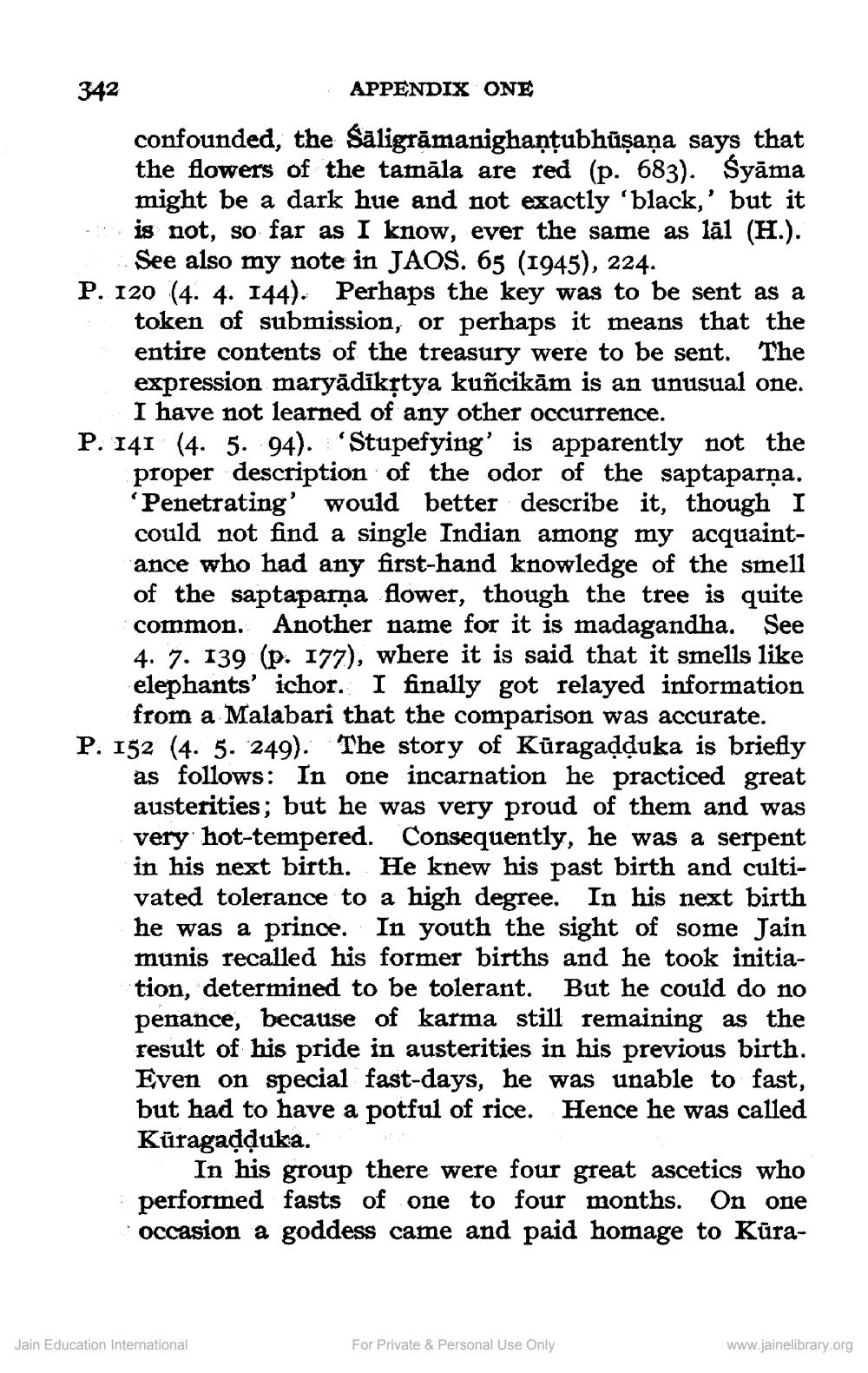________________
342
APPENDIX ONE
confounded, the Saligrāmanighanțubhūşana says that the flowers of the tamāla are red (p. 683). Syāma might be a dark hue and not exactly 'black,' but it is not, so far as I know, ever the same as lal (H.).
See also my note in JAOS. 65 (1945), 224. P. 120 (4. 4. 144). Perhaps the key was to be sent as a
token of submission, or perhaps it means that the entire contents of the treasury were to be sent. The expression maryādīkstya kuñcikām is an unusual one.
I have not learned of any other occurrence. P. 141 (4. 5. 94). Stupefying' is apparently not the
proper description of the odor of the saptaparņa. 'Penetrating' would better describe it, though I could not find a single Indian among my acquaintance who had any first-hand knowledge of the smell of the saptaparņa flower, though the tree is quite common. Another name for it is madagandha. See 4. 7. 139 (p. 177), where it is said that it smells like elephants' ichor. I finally got relayed information
from a Malabari that the comparison was accurate. P. 152 (4. 5. 249). The story of Küragadduka is briefly
as follows: In one incarnation he practiced great austerities; but he was very proud of them and was very hot-tempered. Consequently, he was a serpent in his next birth. He knew his past birth and cultivated tolerance to a high degree. In his next birth he was a prince. In youth the sight of some Jain munis recalled his former births and he took initiation, determined to be tolerant. But he could do no penance, because of karma still remaining as the result of his pride in austerities in his previous birth. Even on special fast-days, he was unable to fast, but had to have a potful of rice. Hence he was called Küragadduka.
In his group there were four great ascetics who performed fasts of one to four months. On one occasion a goddess came and paid homage to Kūra
Jain Education International
For Private & Personal Use Only
www.jainelibrary.org




